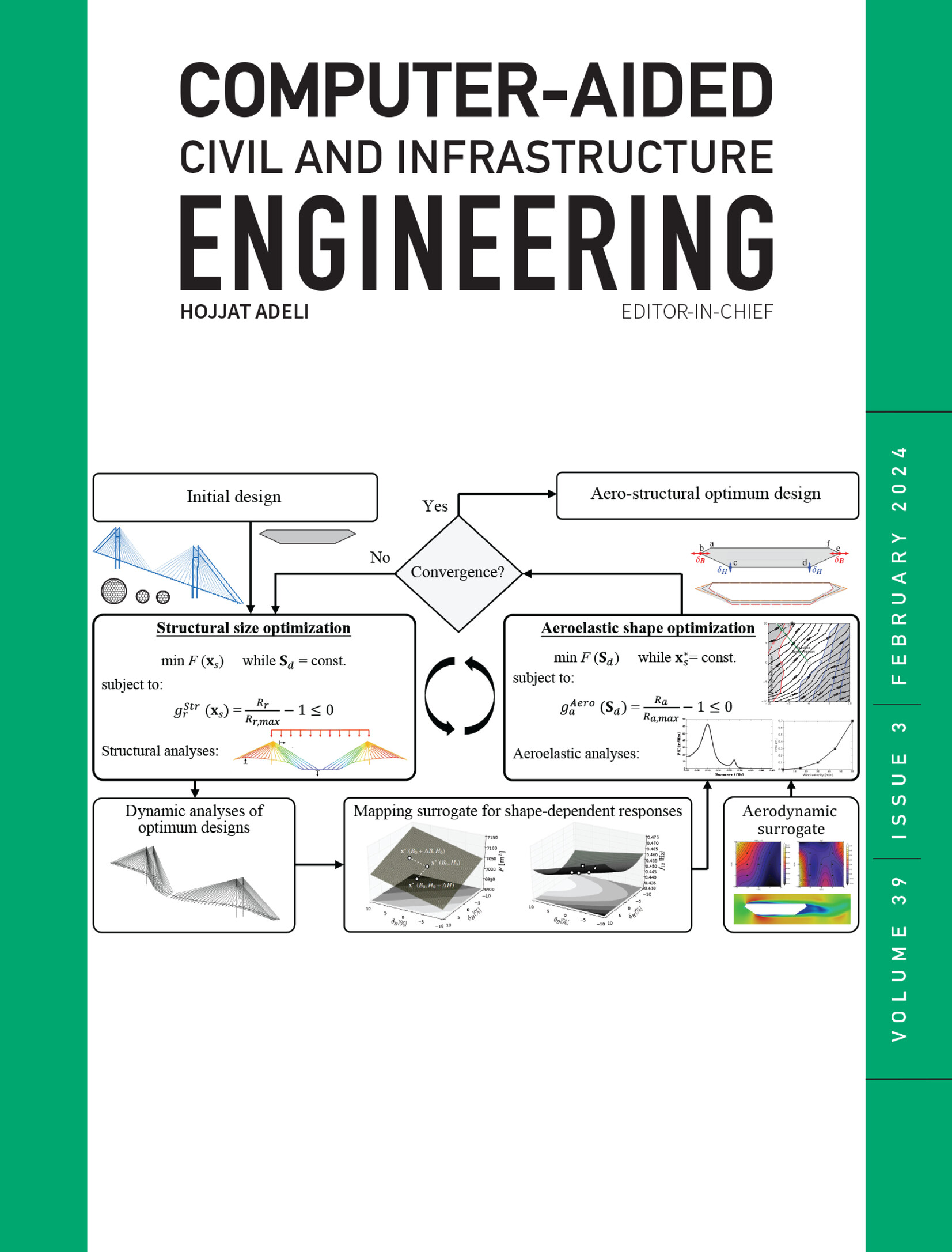基于深度强化学习的多目标拱坝形状设计
IF 9.1
1区 工程技术
Q1 COMPUTER SCIENCE, INTERDISCIPLINARY APPLICATIONS
引用次数: 0
摘要
形状设计是拱坝施工的主要任务,涉及大量的计算成本。传统的方法主要是手工和经验驱动的。虽然代理辅助方法加速了过程,但忽略了可重用的“优化策略”。受现实世界工程设计人员和专家之间周期性交互的启发,提出了一种用于自动化和智能拱坝形状优化的深度强化学习(DRL)框架。该框架将拱坝设计建模为一个DRL任务,并采用软Actor-Critic算法来训练agent,高斯过程代理模型加速了该过程。引入了一种基于权向量的迁移学习策略,将该框架推广到多目标问题。该框架在实际拱坝上实现,结果表明智能体有效地学习了优化策略并生成了高质量的Pareto前沿。优化后的坝体体积和抗拉体积分别减少12.5%和25.87%,提高了经济效益和结构安全性。同样的方法可以广泛应用于其他工程结构设计,并有可能推动工程界的变革进步。本文章由计算机程序翻译,如有差异,请以英文原文为准。
Agent of deep reinforcement learning for multi-objective arch dam shape design
Shape design is the dominant task of arch dam construction, involving significant computational costs. Conventional approaches are largely manual and experience driven. Though surrogate-assisted methods accelerate the procedure, the reusable “optimization policy” is ignored. Inspired by the cyclical interactions between designers and experts in real-world engineering, a deep reinforcement learning (DRL) framework is proposed for automated and intelligent arch dam shape optimization. The framework models the arch dam design as a DRL task and employs the Soft Actor–Critic algorithm to train the agent, with Gaussian process surrogate models accelerating the procedure. A weight-vector-based transfer learning strategy is introduced to generalize the framework to solve multi-objective problems. The framework is implemented on a real-world arch dam, and the results demonstrate that the agent effectively learns an optimization policy and generates a high-quality Pareto front. The selected optimal shape achieved 12.5% and 25.87% reductions in dam volume and tensile volume, respectively, demonstrating enhanced economic efficiency and structural safety. The same methodology can be widely applied to other engineering structure designs and has the potential to drive transformative advances in the engineering community.
求助全文
通过发布文献求助,成功后即可免费获取论文全文。
去求助
来源期刊
CiteScore
17.60
自引率
19.80%
发文量
146
审稿时长
1 months
期刊介绍:
Computer-Aided Civil and Infrastructure Engineering stands as a scholarly, peer-reviewed archival journal, serving as a vital link between advancements in computer technology and civil and infrastructure engineering. The journal serves as a distinctive platform for the publication of original articles, spotlighting novel computational techniques and inventive applications of computers. Specifically, it concentrates on recent progress in computer and information technologies, fostering the development and application of emerging computing paradigms.
Encompassing a broad scope, the journal addresses bridge, construction, environmental, highway, geotechnical, structural, transportation, and water resources engineering. It extends its reach to the management of infrastructure systems, covering domains such as highways, bridges, pavements, airports, and utilities. The journal delves into areas like artificial intelligence, cognitive modeling, concurrent engineering, database management, distributed computing, evolutionary computing, fuzzy logic, genetic algorithms, geometric modeling, internet-based technologies, knowledge discovery and engineering, machine learning, mobile computing, multimedia technologies, networking, neural network computing, optimization and search, parallel processing, robotics, smart structures, software engineering, virtual reality, and visualization techniques.

 求助内容:
求助内容: 应助结果提醒方式:
应助结果提醒方式:


